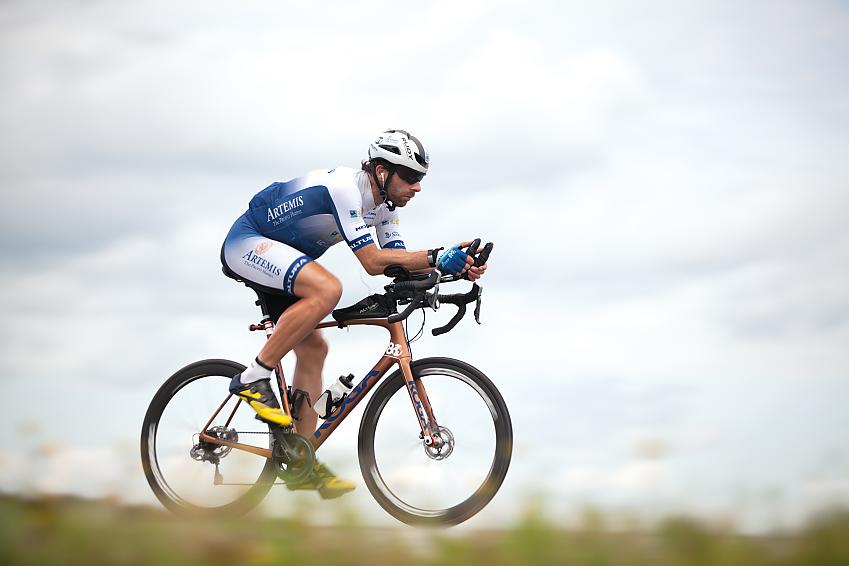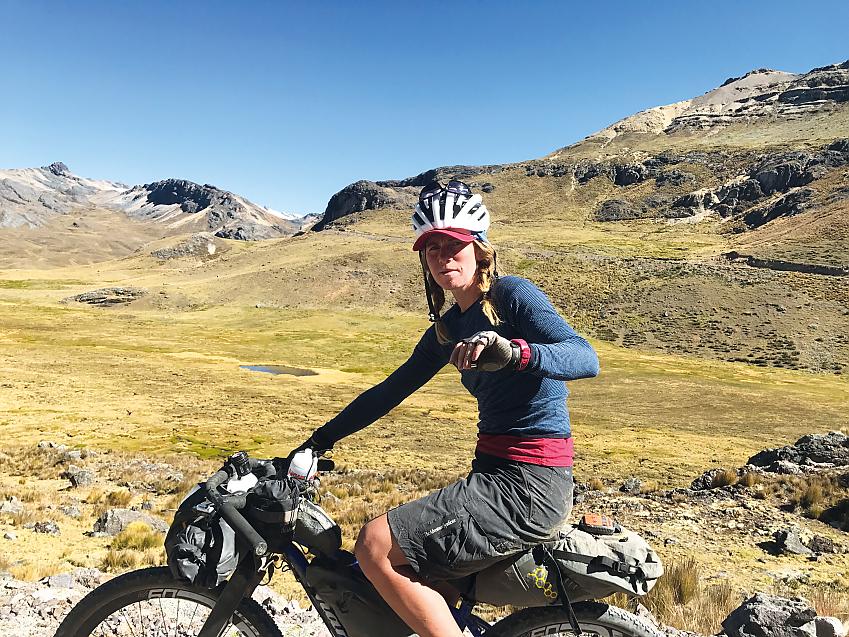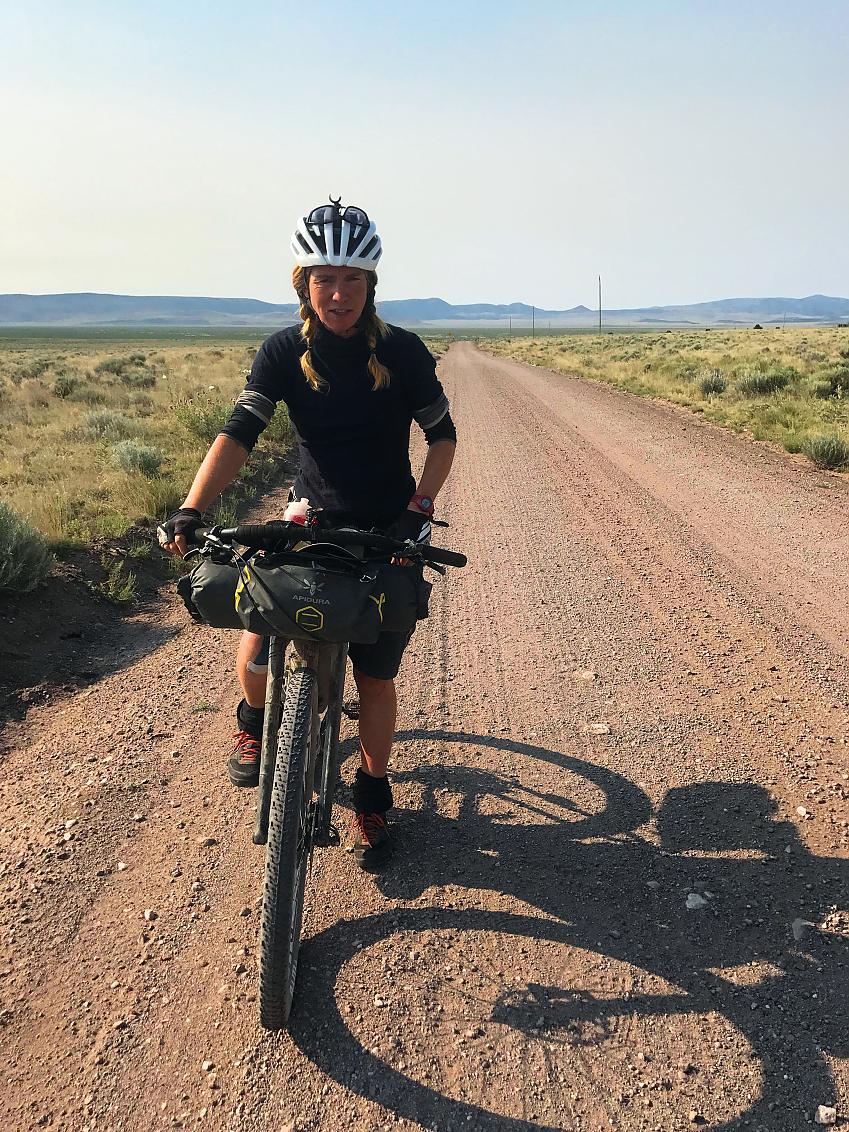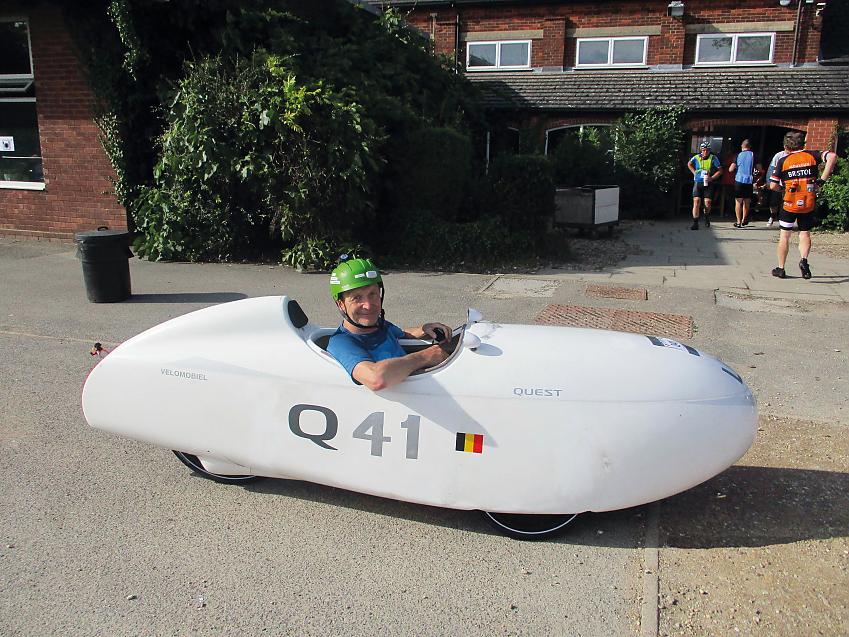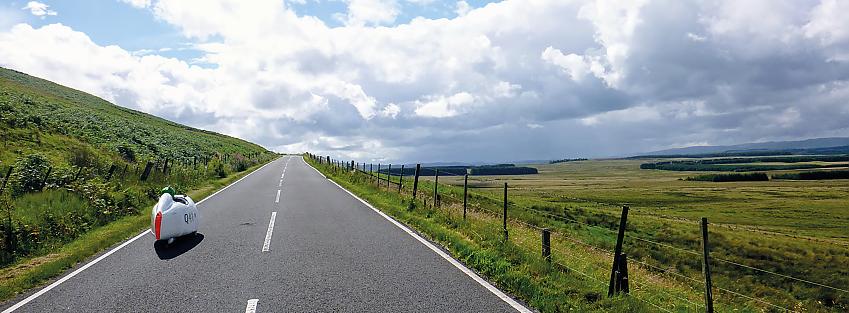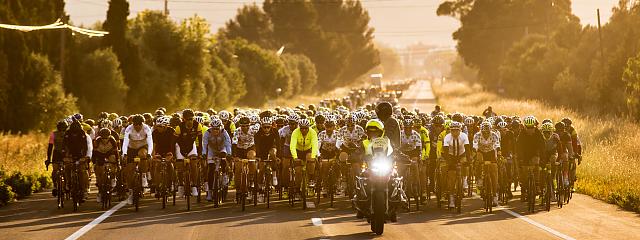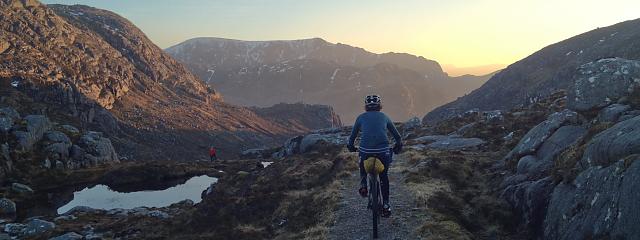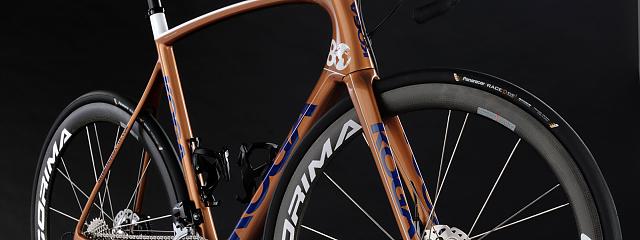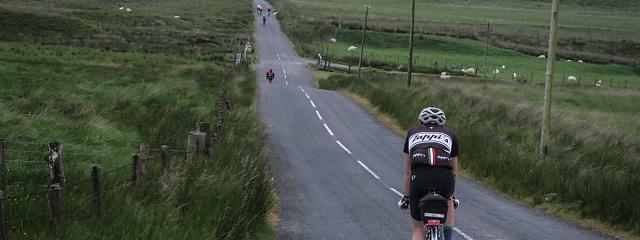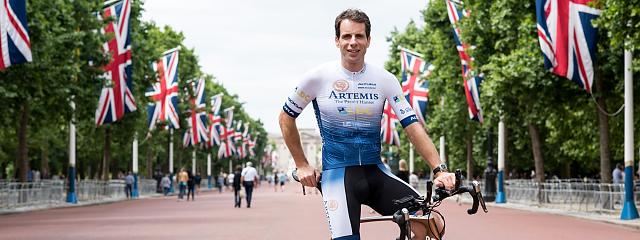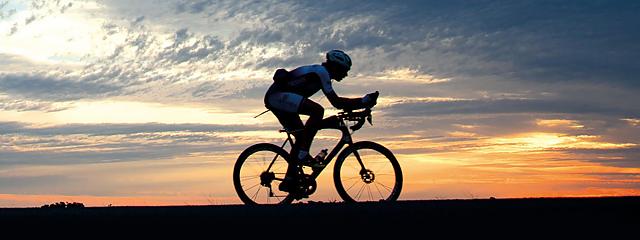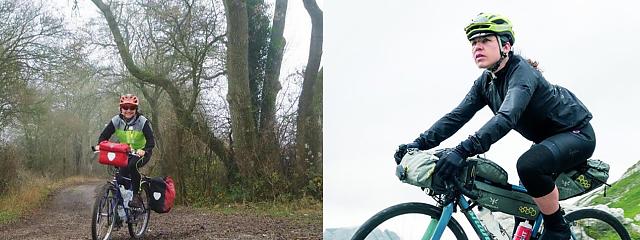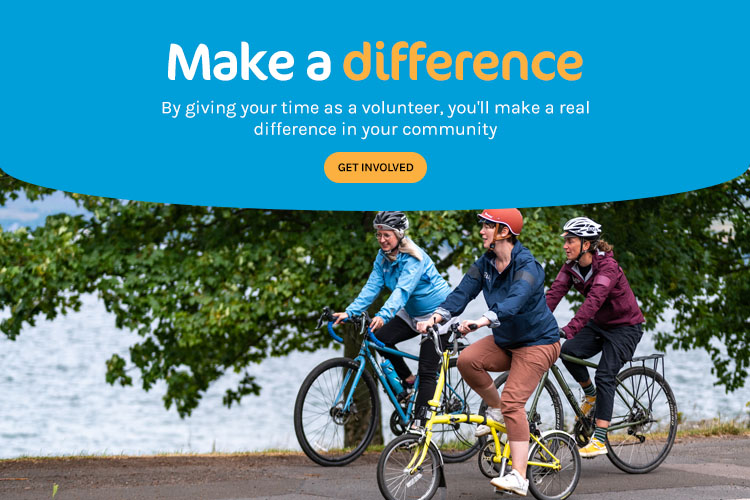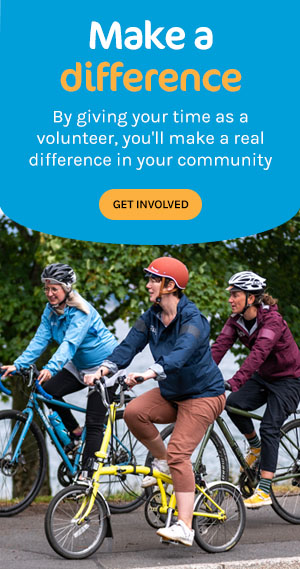
Advice from three ultra-distance cycle adventurers
Advice from three ultra-distance cycle adventurers
Ultra-distance cycle challenges such as the Paris-Brest-Paris audax or Race Across America (RAAM) have been around for decades and continue to attract good numbers of riders. However, in recent years there has been a jump in the number and popularity of massive-mileage rides, ranging from organised events such as the TransContinental Race and London-Edinburgh-London audax, to the record for the greatest distance cycled in a year.
I spoke to three ultra-distance adventurers – newly-crowned round-the-world cycling record holder Mark Beaumont; Lee Craigie, who left top-level cross-country racing to take on the Tour Divide; and Lucien Poppe, who swapped extreme marathon running to ride London-Edinburgh-London on a velomobile – about the experience of riding from dusk to dawn, day after day, and the bikes they used to do it.
Mark Beaumont: Round the World in 80 days
Few can lay claim to the same level of ultra-endurance experience as Mark Beaumont. From cycling the Americas, Africa, and around the world, to rowing in the Atlantic and Canadian Arctic, he is an adventurer known for his extreme exploits. And that, he said, counted for a huge amount when it came to possibly his greatest physical challenge earlier this year: circumnavigating the world by bike in under 80 days.
"I don’t think you could even dream about cycling around the world in 80 days if you didn’t have a lot of expedition experience," Mark said. "I train with people who are stronger bike riders than me in the traditional sense. If we were doing a crit race or a road race or a sportive, they would be faster than me. What sets me up to be a good ultra-endurance rider is something different.
"My ability to ride 16 hours a day, 240 miles a day, is based on experience and my resilience to injury. I think that is one of the biggest parts: it’s not about out-and-out strength or power; it’s the ability to not get injured over days, weeks or months of activity without proper recovery time.
"The other reason why you need previous experience of this is the level of psychology necessary. I think the scale of these challenges would freak out most riders, even if they could physically do it. So even if you have the perfect team behind you, the X-Factor needed to do this is the ability to suffer. How much grit have you got? You can only learn that from doing mega expedition riding."
Unlike Mark’s solo world record ride back in 2008, for the sub 80-day challenge he did have the perfect team supporting him with logistical, medical and mechanical back-up. It was a revolutionary approach to the circumnavigation world record.
"I took probably more inspiration from round the world sailors and flying records; things where it’s become really a very professional race around the planet. This was not bikepacking or expedition touring, this was pure performance. I’m not pretending that it’s the same as I did 10 years ago; this was very different. I really wanted to take the circumnavigation record to the next level," Mark said.
Consequently, the bike Mark used wasn’t the Koga touring or trekking machines of previous attempts but rather a carbon road bike with Shimano Ultegra Di2 electronic gearing and hydraulic disc brakes. It was still built by Koga, and featured a relatively high front end, being designed to cope with the specific demands of this challenge.
"Other cyclists seemed to think that I was taking some risks by using electronic gears and hydraulic brakes but I had a mechanic in the van behind me the entire time. If I had a puncture it took all of 30 seconds to fix – we just changed the whole wheel," Mark said.
"The bike itself was insanely tough. A bike that needs to do 240 miles a day has to be fairly aero, fairly fast and light, but most importantly it has to be comfortable. It needs to fit perfectly and you have to have a tri-bar placement that your back and backside can tolerate for long hours."
The most important thing for ultra-endurance cycling comfort is the ability to vary riding position. To that end, along came Mark’s tried and tested Selle SMP Pro saddle, which he’s had for 10 years. It offers a range of seating positions depending on whether the rider’s hands on are the flat part of the handlebar, brake hoods or tri-bars.
The Profile Design handlebar itself also has an interesting shape, with the bar curving forwards towards the drops quite early on, thereby providing an additional handhold. Mark’s tri-bars were fitted with the thickest possible padding so that he could use them fully extended or short, with almost only his wrists on the pads and hands very loosely on the straight section of the bars.
Fast, light, tough
On a ride of such magnitude, mechanical wear is to be expected. Mark’s bike had a new chain every eight days and a new cassette every fortnight. It also went through three sets of pedals, and he broke one crank. However, the electronic and hydraulic components worked well, as did another slightly unusual spec choice – the 47mm deep-section carbon Corima wheelset.
"The wheels were 12mm bolt-throughs. That made it quite a rigid set-up, which I really liked," Mark said. "The Corimas are fast, light, and sparsely spoked, but they stayed true the entire way round without a single broken spoke. I think the people at Corima themselves were surprised because they made that wheel as a lightweight racing wheel, not to go round the world.
"I also used Panaracer 28mm tyres. They’re interesting because they’re slightly pyramid shaped, so you’re riding on a fairly narrow tyre until you reach a corner. I hadn’t used Panaracers before but I had fewer than 12 punctures in 18,000 miles, which is amazing considering the roads I went over. Obviously we lowered the tyre pressure;for some of the shocking roads in Russia."
That statement, the decision to alter something as basic as tyre pressures because of terrible far-flung roads, is a reminder that this was still a bike ride, albeit one unlike anything anybody has ever done before. It was still about a rider and his bike exploring the world.
"You’re still tuned in to the world around you,’ Mark said. ‘The difference is, when you’re travelling almost 1,000 miles every four days, you see the world like a slide show. I got from Paris to Beijing in 28 days; I got across Australia in a fortnight. It’s a pretty exciting sense of change. And for 78 days, I pedalled through every sunrise and sunset – there’s a great sense of journey.
"Ten years ago when I cycled round the world, touring was at one extreme, racing was at the other, and the worlds never talked to each other. But now that’s changing and I think that’s pretty cool."
Lee Craigie - The Tour Divide 2,745-miles off-road
Before turning to ultra-distance cycling, Lee Craigie enjoyed a stellar career in cross-country racing, competing in UCI MTB World Championships and World Cups, and even being British and Scottish champion. In fact, it was the experience of coming back from a World Cup event that sowed the first seed of interest in long-range challenges.
"I started to get fed up of racing internationally", Lee said. "On one occasion, instead of getting the flight back from a World Cup in Andorra with the rest of the squad, I rode all the way home to Britain. I thought: This is what I enjoy doing. I guess that was where it started.
As your body gets older, it actually lends itself more to ultra-endurance. I can keep going mentally and physically a lot longer than I could when I was younger.
Lee Craigie
"Keeping the top-end fitness needed for racing is exhausting. But as your body gets older, it actually lends itself more to ultra-endurance. I can keep going mentally and physically a lot longer than I could when I was younger. I wasn’t ready to stop challenging myself on a bike and I also wanted to get back to the reason I started mountain biking in the first place, which was to adventure and explore by bike."
One important ingredient in Lee’s transition to ultra-endurance events has been her custom-made Shand Bahookie. And, as two proud products of Scottish cycling, it seemed fitting that Lee and her Bahookie’s first self-supported jaunt should be the Highland Trail, a 550-mile off-road ride around the north of Scotland.
One bike for everything
"The guys at Shand really worked with me to build a frame that would be perfect for my needs," Lee said. "I’ve ridden £7,000 bikes in my racing career but this is the best bike that I’ve ever been on. The great thing is that by swapping in different wheels, tyres, and rigid or short-travel suspension forks, I can use it for pretty much anything: road riding, gravel, even technical trails. So I used my Bahookie on the Highland Trail, which meant I knew it would work perfectly for what came next."
And what came next wasn’t just a step up, but – bike familiarity notwithstanding – a leap into the dark. In June this year, Lee took part in the Tour Divide. While the Great Divide route from Canada across the United States to Mexico (or vice versa) can be ridden at any time, the Tour Divide only takes places each June. Participants/competitors begin with a mass start, then have just 25 days for men, or 29.5 days for women, to complete the 2,745-mile off-road course. No help is allowed, although supporters can follow participants’ progress via Trackleaders.com, which shows the position of each rider’s GPS tracker.
Lucien Poppe - London-Edinburgh-London
You may think that for taking on mile after mile of an ultra-distance cycling event, the efficient aerodynamic qualities of a faired recumbent or velomobile would be perfect. For the most part, you’d be correct. But as novice ultra-rider Lucien Poppe realised when he took on his first event – the 1,441-kilometre London-Edinburgh-London – riding a velomobile does present some issues.
"Velomobiles are very comfortable and very efficient because they have very low air resistance, so that’s an advantage when the road is flat. But from the moment you have to climb, you have the weight of the velomobile plus a few kilos for components and spares, plus the rider’s own bodyweight, which added up to about 120kg to pull up the hills. That was a lot more demanding than I expected," Lucien said.
"I had to change my gearing because my velomobile was geared for the flatlands. The standard gearing I have for cycling is a classic triple in front with 53-42-30, and behind I have a 10-speed 11-28T cassette. I had to change that to an 11-34T cassette for climbing. It was only when I had started LEL and had done 200 or 300km, and several hundred metres of climbing, that I felt this was going to be a fairly tough challenge. So I changed the gearing, which meant that although I was climbing at a lower speed, at least I could keep a nice high cadence."
If Lucien’s sensible approach seems surprising considering this year’s LEL was his first ultra-distance cycling event, it’s because he isn’t a novice when it comes to doing ultra distances in other disciplines.
Marathon man
"I have done 40 running marathons, including the Jungfrau, where you have to climb 2,000 metres, and the Marathon des Sables, which involves running 250km across the Sahara desert. I have also done 100km marathons, so I am a guy who likes a challenge and I know what it’s like to push your body to its limits. I just didn’t have the experience of cycling long distances with the velomobile."
Lucien originally bought his velomobile purely for commuting purposes, not extreme challenges. However, seeing competitors at the laid-back cycling World Championships in Belgium inspired Lucien to think about doing a little – or rather a lot – more with his trike.
"There were people at the World Championships who had just been riding Paris-Brest-Paris and had cycled straight to Belgium for the Worlds. So they had ridden 2,000km in one week. I didn’t know it was possible to do such a thing with a velomobile; I used mine just to ride to work and back," Lucien said.
"I started to research rides like PBP and I found the details of London-Edinburgh-London. In January, I booked my place and that was it. The maximum distance I had ridden in one day before I signed up had been 200km, but I had to train to prepare for a ride of almost 1,500km in five days.
"I followed a training scheme based on my running experience. I tried to do as much low-intensity riding as possible; that was the basis of everything. Then I gradually extended the distances I would do: 100km, 200km, 300km. My most demanding ride was 550km in 27 hours – that was at the end of my training programme."
Velomobile advantages
Another preparatory factor was to make sure his bike was suited to challenge. The Velomobiel NL Quest that Lucien used for LEL is a three-wheeled design based on an aluminium frame with a part carbon, part glass-fibre fairing. He was quite sure, hills aside, it was the best machine for the job.
"With a velomobile you are sitting very comfortably. You can take luggage with you. You are more or less protected from the rain. You also have some protection from accidents,’ Lucien said. ’But the most important thing about a velomobile is that the air resistance is far reduced, so with the same power output you can have a lot more speed. The fairing is the key to all this as it lowers the air resistance; everything is as aerodynamic as possible on a velomobile. Weight is the second factor, and rolling resistance is the third, but neither of them are as important as lower air resistance."
One unique consideration, though, is potentially reduced chain life. Although the mechanical components of the velomobile are the same as a ‘normal’ bicycle, the chain has to reach from the front to the rear of the bike, meaning three standard chains are joined together. However, this is where Lucien’s sensible training helped.
"I try to keep a cadence of 90rpm or more. You have two types of cyclist, one who pedals with power, one who pedals with souplesse – a fluid style. With the velomobile, it’s important to go with souplesse. I know velomobile riders who break their chain every ride because they put so much power through the pedals."
That souplesse did Lucien proud, and he completed LEL in 110 hours, six hours inside the time limit. "It was an amazing ride. I consider LEL the most epic ride in cycling. I didn’t take part to go as fast as possible; I had only one goal, which was to cross the line. As long as you get in even just a minute before the time limit, it is okay," Lucien said.
Will I do another? I’m not planning anything. It’s too soon – the wounds are still open!
Lucien Poppe
"Will I do another? When you run a marathon for the first time and you cross the line, you swear you will never run another marathon. This is my first ultra-distance ride so I’ve sworn never to do such an event again, but I don’t know. Maybe I will do Paris-Brest-Paris. Right now, though, I’m not planning anything. It’s too soon — the wounds are still open!"
Mark Beaumont’s Koga Kimera Premium Kimera Premium
Frame: Custom-built carbon frame with carbon fork
Wheels: Corima 47mm rim deep-section carbon wheels, Panaracer Race D Evo 28mm tyres
Transmission: Look Keo pedals, Shimano Ultegra Di2 gearing, 53-39t Shimano Ultegra chainset, 11-28t or 12-25t cassette, Shimano Ultegra Di2 shifters
Braking: Shimano Ultegra hydraulic discs
Steering & seating: Profile Design handlebars, Selle SMP Pro saddle
Equipment: Garmin Edge 1000, Garmin Forerunner 920XT, Iridium GPS tracker
More information: There's even more details in a feature on the reasons behind the choices on Mark's round the world bike.
Lee Craigie’s Shand Bahookie
Frame & fork: Custom-built Columbus Niobium steel frame, Shand Carbon Boost fork
Wheels: ENVE M60 carbon, front hub Schmidt SON dynohub
Transmission: Time Atac pedals, 34t SRAM Eagle chainset, 10-50t 12-speed cassette, SRAM Eagle shifter
Braking: Shimano XTR hydraulic discs
Steering & seating: Jones H-bar, Specialized Henge saddle, Specialized Saver seatpost
Equipment: Exposure lights, Apidura luggage, Agaro charging unit, Exped sleeping bag, bivvy bag and mat
Lucien Poppe’s Velomobiel NL Quest
Frame: Aluminium frame with part carbon and part glass-fibre fairing
Wheels: Rigida aluminium rims, Sapim spokes, Vredestein F-Lite tyre (front wheels), Continental Contact Speed (rear wheel)
Transmission: Shimano PDM525 SPD pedals, 53-42-30t Isis triple chainset, Shimano Tiagra front derailleur, 11-34t cassette, SRAM X9 rear derailleur, SRAM Gripshift and Trigger shifter
Braking: 90mm aluminium drum brakes in front wheels (×2)
Steering & seating: S-shaped carbon seat with Ventisit cushion
Equipment: B&M Lumotec lights, Garmin Edge 1000, VEHO Bluetooth speaker






